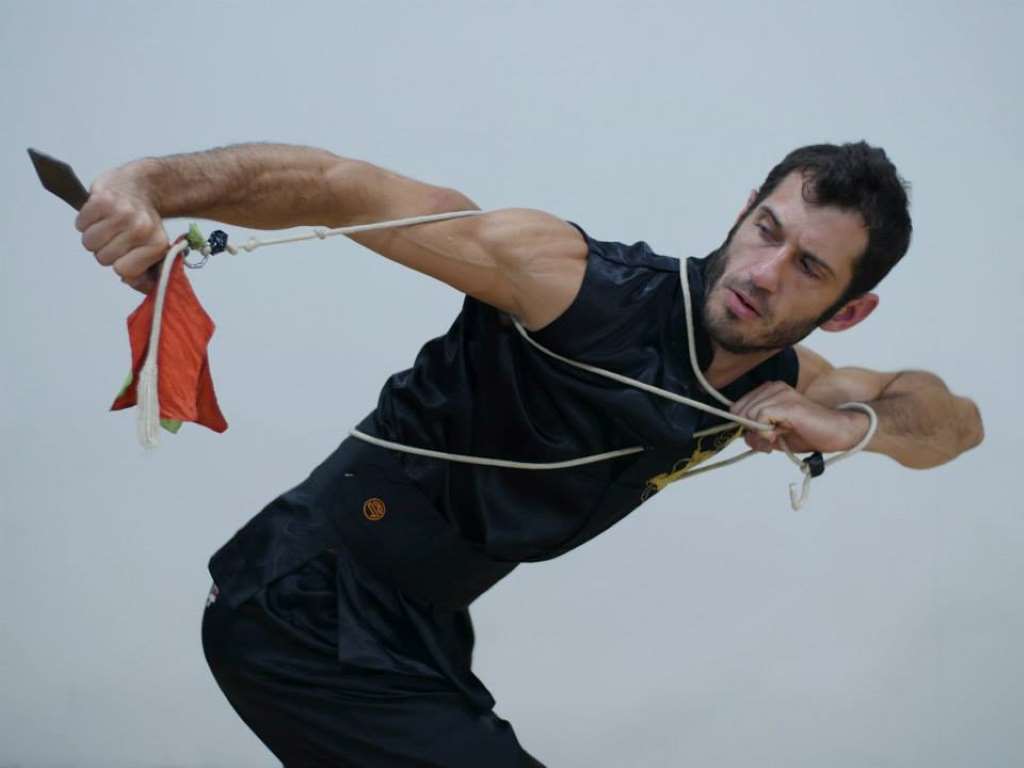The rope dart, a fascinating yet often misunderstood weapon, has a history intertwined with both combat and artistry. The rope dart’s origins are shrouded in some mystery, with mentions in legends and historical texts suggesting its use as far back as the Han Dynasty (206 BC-24 AD). Some accounts depict generals using rope darts to dismount enemy cavalry, while others describe them as tools for entangling the legs of animals.
Whether used in large-scale warfare or smaller skirmishes, the rope dart’s versatility was undeniable. Its long, flexible rope (usually 3-5 meters) with a metal dart attached to one end allowed for a variety of techniques:
- Throwing: The dart could be hurled at long-range targets, then pulled back using the rope. This provided a unique advantage over traditional throwing weapons like javelins, which could not be retrieved.
- Entangling: The rope could be used to ensnare opponents’ limbs or weapons, creating an opening for attack or defense.
- Binding: Captured enemies could be restrained with the rope, limiting their ability to fight back.
- Striking: The weighted dart could be swung with force, delivering a powerful blow to an opponent.
Despite these advantages, the rope dart had its limitations in a combat setting. Its effectiveness depended heavily on the user’s skill and precision. A poorly aimed throw could easily miss the target, leaving the wielder vulnerable. Additionally, the rope could become entangled in obstacles or caught by an opponent, rendering it useless.
As a result, the rope dart likely served as a secondary or tertiary weapon, employed when primary weapons were lost or unavailable. It may have been favored by scouts, assassins, or those who relied on trickery and surprise.
Over time, the rope dart’s combat applications gradually diminished. Its complexity and the need for extensive training made it less practical compared to other weapons like swords and spears. However, it found a new life in the realm of martial arts and performance.
The rope dart’s unique movements and techniques proved to be visually captivating, making it a popular choice for demonstrations and exhibitions. Its intricate spins, throws, and catches became a form of artistic expression, showcasing the practitioner’s skill and coordination.
Today, the rope dart remains an integral part of Chinese martial arts. It continues to be practiced and performed by enthusiasts around the world, keeping its legacy alive. While its role in combat may be debatable, its cultural and artistic significance is undeniable.
In conclusion, the rope dart’s history is a blend of combat practicality and artistic evolution. While its use in warfare may have been limited, its unique characteristics and versatility made it a valuable tool in certain situations. Today, it serves as a reminder of the rich history and diverse traditions of martial arts.
Whether used in battle or in performance, the rope dart’s legacy continues to captivate and inspire, showcasing the ingenuity and creativity of human expression.
In the context of modern martial arts:
Today, the rope dart is often seen in wushu competitions and demonstrations. It has evolved into a performance art form, with practitioners showcasing intricate routines filled with spins, throws, and catches. While the focus is on artistry and skill, the rope dart’s combat roots remain evident in its techniques and movements.
In the context of historical reenactments:
The rope dart sometimes appears in historical reenactments and demonstrations, offering a glimpse into its potential combat applications. Reenactors use the weapon to showcase its versatility and effectiveness in various scenarios, providing a unique perspective on its historical significance.
In the context of cultural preservation:
The rope dart remains an important part of Chinese cultural heritage. It is a symbol of tradition, skill, and creativity, passed down through generations of martial artists. Its preservation ensures that future generations can appreciate and learn from its unique history and applications.





